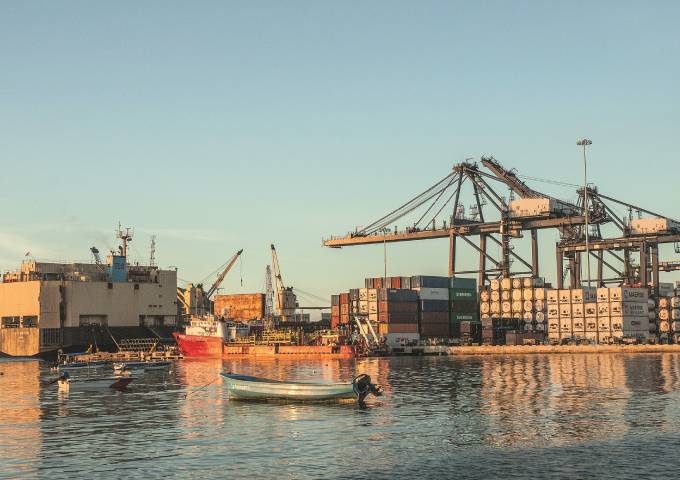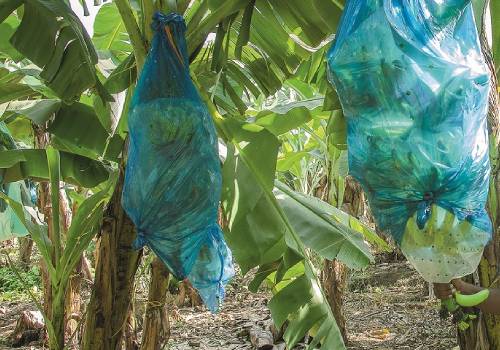Protectionism paralyzes the country’s foreign trade
By: Mauricio Veloza
Photos:
Economics and Politics

By: Mauricio Veloza
Photos:
If the pandemic taught us something around the world, it is that economic systems in different countries are too fragile and that competitiveness is put to the test in times of crisis. To mention just one example, the emergency emerged when the dramatic reduction in oil prices revealed the weakness of the apparatus of Colombian foreign trade, which, for almost a century, has depended on the socalled commodities to stimulate its exports (first bananas, then coffee, and now the products of the mining–energy sector). This happened although an important group of economists has reiterated, insistently for decades, that it is not convenient for Colombia that exports are excessively dependent on very specific products and that they stop stimulating other strategic sectors.
The prominent and renowned economists Fernando Jaramillo; Juan José Echavarría, who is the current General Manager of the Banco de la República (Central Bank of Colombia); and Iader Giraldo from the Faculty of Economics, Universidad del Rosario, are parts of those voices that insist on making changes regarding the country’s foreign trade. In the book Foreign Trade in Colombia: Policy, institutions, costs, and results, which was published at the end of last year by the Banco de la República, these professionals put the issue on the table.
Their purpose with the publication, which has aroused great interest among experts on the topic, was to establish how big economic protection in Colombia is and what its effect has been on productivity and on Colombian’s well-being in the past seventy years. The conclusion is overwhelming: Protectionism has been a relevant factor in stopping the diversification of exports, with all its consequences for the national economy, and thus, for the population’s welfare.
“Protection acts as a tax on exporters,” say the researchers in the book. The reason for this is that many sectors do not dare to export because they do not feel the need to seek markets abroad as their products are protected or even because the cost structure is detrimental to them. For example, raw material costs are very high. "Introducing tariffs and non-tariff measures takes away competitiveness from exporters,” says Jaramillo.
The power of lobbying
For researchers, the agricultural sector is perhaps one of the best examples to show the meaning of the lack of promotion of other strategic sectors of the economy with exporting potential, particularly, the lack of incentives for research, development, and innovation.
“The stimulus to the producer focused solely on tariffs ends up harming farmers in the long term. This is what we are noticing: Those with the greatest lobbying power with politicians are those who achieve greater protectionism, and small producers are the most affected. They could even become more competitive, that is, if only foreign trade worked adequately. They should receive irrigation districts, access to credit, better distribution of the land, etc.,” assures Fernando Jaramillo.
In his opinion, the country is giving very large subsidies to sectors that do not need them and that are not strategic. “What we have to think about now is not ‘let's protect the agricultural sector’ but ‘let’s provide it with the right conditions so that it does not stop growing and becomes more competitive,’” he says.
Given the conditions, there is the possibility of researching, developing, and innovating. Jaramillo gives the example of the cocoa sector, wherein innovation to combat pests and produce new varieties requires significant efforts. Precisely the lack of measures to support research, development, and innovation in different sectors is another factor that has a negative impact on the country’s productivity.
Similarly, it is untrue that Colombia has economic openness as it has been said, which is an example of protectionism in the country, or if you like, that of the protectionism impeding economic openness.

Economists explain in their book that in 1991, an attempt to make the opening was done, but it only lasted a year because the provision was closed “through the back door” as the country went from 407 to 50,000 non-tariff measures between 1991 and 2014. "That meant that the attempt for the opening was not achieved and that the degree of protectionism ended up affecting companies’ productivity. That is what we try to show in the book,” Jaramillo states..
In the publication, economists also acknowledge that in the country, there is a very large concentration of economic power, which has a strong influence on political power, leading to taxes, that is, protectionist measures that favor only a few. "What has been missing is a better explanation to the country of what the benefits are of foreign trade and a better income and political power distribution so that the state is not co-opted by private economic interests. Free trade agreements are indeed signed here, but huge non-tariff measures are adopted for different products through the back door,” says Jaramillo.
As examples, he points to the automotive and metalworking sectors in the past and the agricultural and aeronautical sector in the present. “So many years spent in protectionism for national airlines and we did not achieve competitive companies. We have literally not taken off,” he adds.
For him and his colleagues, private interests and a very fragile institutionality of the Colombian State—subject to pressure groups—have led to poor foreign trade transparency in the country.
“Here, the law is presented in one way to Congress, and then, it comes out differently. One thing is announced, and another thing comes out because of the so-called lobbying power. The more dispersed the policies the more that lobbying power is facilitated, we say it in the book. All that is complex and dispersed is easily changed to have poor transparency, and it facilitates corruption,” categorically assures Jaramillo.
With this scenario, researchers point out that multiple items are required to consolidate a foreign trade operation that considers productivity, stimulates diversity, and benefits consumers: Having standardized tariffs and lower non-tariff barriers; facilitating import procedures; removing what is not strictly necessary; stimulating exports through a reliable science and technology policy; and having public policies that facilitate transportation, commerce, infrastructure, education, and everything that stimulates productivity.
“Now the question is this: Do the authorities have the political willingness to make modifications to the foreign trading system, which would generate political costs in the short term but would have important economic effects in the population’s welfare in the long term? Hard to avoid stepping on people’s toes,” points out Jaramillo.

"What has been missing is a better explanation to the country of what the benefits are of foreign trade, better income, and better political power distribution so that the state is not co-opted by private economic interests. Free trade agreements are indeed signed here, but huge non-tariff measures are adopted for different products through the back door,” says Rosario’s researcher, Fernando Jaramillo.
The book Foreign trade in Colombia: Policy, institutions, costs, and results examines the performance of the Colombian external economic sector since 1950 with an emphasis on foreign trade policies; the institutions that have governed the sector; the costs of participating in international trade; and its effects on protection, manufacturing sector productivity, and incentives to import and export. These topics are analyzed in three parts. The first one evaluates the history of the trade policy, the institutions of the external sector, and the participation of Colombia in world trade. The second part quantifies the costs of trading and the amount of local production protection, essentially the manufacturing one, in the period 1950–2016. The third part quantifies the incentives to export and the impact of protectionism on the manufacturing sector’s productivity.
Some ideas that the book highlights:
• For seventy years, the Colombian economy experienced important changes in its commercial policy and in the institutions that govern the external sector. Although it sought to liberalize trade in different periods, protectionism reigned throughout the period.
• If Colombia wants to be an important exporter of processed, manufactured, and agricultural products, it has to pay attention to its institutional deficiencies.
• Protectionism is the word that best describes Colombia's trade policy in the past seventy years. It can be affirmed that the Colombian economy is less liberalized today than it was in 1991 and possibly as restricted as it was in the seventies and late eighties.
• In sum, Colombia has not exploited its export potential because the incentives to do so have been meager, which is because of high protection accorded to local production, scarce infrastructure, and expensive logistics services.
• A true opening of the economy would help improve incentives to export, reduce costs, and increase productivity significantly.
In the joint research among the Banco de la República (Central Bank of Colombia), Universidad del Rosario, and Development Bank of Latin America (CAF, for its acronym in Spanish), the researchers leave a reflection on the obstacles to the growth of foreign trade of goods and the diversification of Colombians exports of goods other than coffee and mining–energy.
Two indicators reveal the poor performance of Colombian foreign trade: The export and import value of goods and services has remained relatively stable at approximately 35 percent of gross domestic product (GDP), and the export basket comprises mainly traditional goods, initially coffee, and in the past twenty years, mining and energy assets.
If the export performance of Colombia is compared with that of countries such as South Korea and Chile, the poor performance of the nation in terms of agricultural and industrial exports is even more evident, which forces us to reflect on the reasons for that situation.
The work of leading economists, of almost 500 pages, left four clear conclusions in foreign trade matters for Colombia:
1. Non-tariff measures are very important. That means the country should not focus on tariffs; rather, it should reflect on non-tariff measures to determine why these have increased so much, which ones are necessary, and which ones are not.
2. The dispersion of tariffs is relevant. It is better to have unified rates, not so dispersed, because that dispersion favors tariff policies depending more on the power of the lobby of some sectors and not a rational decision to improve the well-being of all Colombians.
3. In Colombia, protection affects companies’ productivity. The most productive sectors are those in which there has been less protectionism.
4. Colombia is a very protectionist country. Economic openness has not happened because of the protection of certain economic sectors. Fernando Jaramillo and Iader Giraldo are already in the process of writing a second book, which will be jointly written between Universidad del Rosario and Banco de la República. Its goal is to explore the tariff equivalent of the non-tariff measures and their effect on imports and Colombian’s well-being.